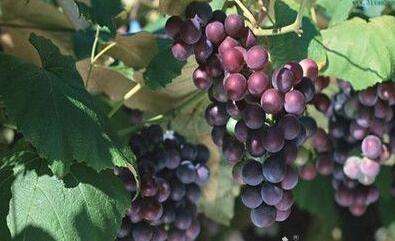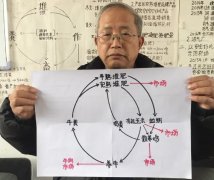Viticulture: grape cultivation methods, grape planting techniques and management
Organic grape cultivation
Now there are more and more fruits planted. What kind of fruits do you know? Do you know how to grow grapes? If you don't know, come and have a look.
Climate and soil suitability
Grapes belong to temperate fruit trees. When cultivated in subtropical Taiwan, there are many diseases and insect pests and it is difficult to manage them. Grapes in Taiwan are mainly cultivated in the way of two harvests a year. The time of accelerating germination of summer grape is in winter. If it is too early, it is easy to encounter the phenomenon of flower bud death caused by late frost, and if it is too late, it will encounter high temperature and humidity in the later period of fruit. there are many fruit diseases and serious rot, and the coloring is also poor. If winter grapes sprout too early, dew fungus is often caused by high temperature and humidity at the initial stage, or flower buds are damaged by typhoons. If budding is too late, it is easy to suffer from the damage of winter monsoon and early defoliation, so that the fruit quality can not achieve the ideal goal.
From the climate point of view, the most suitable areas for growing grapes in Taiwan are the slopes along Zhuoshui River, Dajia River and Daan Creek, mainly because these areas are sheltered from the wind, but have good ventilation and a large temperature difference between day and night. No matter summer or winter cropping can produce very beautiful grape fruit, but the soil is highly acidic, calcium and magnesium materials must be used every year to gradually increase the acidity and alkalinity of the soil. The demonstration garden of organic grapes has 5 hectares set up in Baimaotai, Xinshe Township, Taichung County, which belongs to the hillside on the south bank of the upper reaches of Dajia Creek. The orchards are all cultivated with herbaceous plants, with a beautiful environment and fresh air. As long as the producers can earnestly cooperate with the guidance of agricultural administration units and agricultural improvement farms in Taichung District, and make good efforts, they will certainly be able to produce the best quality organic grapes. Another 5 hectares is located in Dacun Township, Changhua County, which belongs to clay slate alluvial neutral clay loam and silty clay loam in the lower reaches of Zhuoshui Creek. The soil has high calcium and magnesium content and can produce grapes with the highest sugar content. However, special attention must be paid to orchard drainage and disease prevention and metallurgy, especially the correct time for sprouting. In addition, there is a general manganese deficiency. Attention should be paid to supplement manganese fertilizer to prevent manganese deficiency in order to be successful.

Fertilizer application
Immediately after grape harvest, organic fertilizers made from bagasse, rice, sawdust, peat, pig, cattle and sheep manure, oil meal, rice bran, phosphate rock powder and shell powder were used as base fertilizer, namely soil cultivation and irrigation. The amount of organic fertilizer used is calculated according to the nitrogen use rate of about 250kg / ha. For example, when the nitrogen content of the organic fertilizer intended to be used is 2% and the nitrogen use is 250kg, the amount of organic fertilizer used per hectare should be 250 kg 100 kg 2 = 12500 kg. In addition to organic fertilizer, appropriate amount of phosphate rock powder, seabird dung, shell powder, seaweed powder and so on can be applied and phosphorus-solubilizing bacteria, beneficial microorganisms, humic acid and so on. Results at the initial stage, according to the growth situation, organic liquid fertilizer made of soybean powder, rice bran, seaweed powder, amino acid, egg, beneficial microorganism, black sugar, etc., or directly applied fish essence, amino acid, seaweed essence, blood meal and so on. In the middle and later stage, seaweed essence was applied and calcium and magnesium materials were applied according to the soil condition.
Grass management
Grass cultivation is adopted in all the orchards, and wild weeds such as Artemisia angustifolia, Cymbidium officinalis, Tu Xiang, Chicken rattan, Petunia mandshurica and other wild weeds are removed as far as possible, leaving mild weeds such as Saxifraga, Carpet grass, clematis, etc., so that earthworms and other beneficial microorganisms and small animals in the soil can reproduce naturally, so as to promote the soil structure to be gradually softened, so as to facilitate fertilization and normal growth of grape roots and absorb nutrients. When the weeds are too high, mechanical cutting should be used appropriately. Do not use any herbicides. At present, the main grass phase of Baimaotai organic vineyard is carpet grass, while the grass phase of Dacun organic vineyard is more complex, including two-ear grass, clematis, carpet grass and so on. The use of herbicides is easy to kill earthworms and make the soil hardened and salinized, but the fruit will be badly colored, the sugar content will be reduced and the natural flavor will disappear.
Hardening and salinization of soil caused by frequent spraying of herbicides
So that the grapes grow poorly or die.
Plant native species of dwarf clematis or other mild grasses
Can help eliminate soil nematodes, germs and salts.
Pruning
The pruning time of summer grape is about between December and February, too early pruning will sometimes encounter late frost and make flower buds die, too late pruning will result in high temperature and humid climate in the later stage, grape fruit will rot seriously, and the coloring is not good. The best pruning time in Dacun village is mid-January, and Baimaotai can be a little later. The pruning time of winter grape is from July to August. When pruning too early, the sprouting stage is hot and humid, dew fungus and rust are serious, too late pruning will result in early defoliation caused by winter monsoon and affect fruit quality. the most appropriate pruning time is in the first ten days of August. When pruning, cut off the top immature branches or poorly positioned, poorly developed and pest branches to facilitate ventilation and sunlight exposure, so as to reduce diseases and insect pests and promote photosynthesis. Budding agents are used immediately after pruning.
Pest control
The main diseases of grape are late rot, exposure fungus, rust, powdery mildew, gray mold, black pox, leaf spot, bitter rot and so on. The pests include coffee bark moth, yellow poison moth, shrimp shell moth, roll leaf moth, Shenze's leaf moth, shell worms, root nodule nematodes, snails and so on, but the biggest threat to the cultivation of organic grapes is the disease. often the disease is not properly managed, resulting in serious decay and loss of harvest. For the prevention and control of late rot, we should first pay attention to the selection of good organic fertilizer with high content of organic matter, balanced nutrition and few miscellaneous bacteria, poultry manure with more miscellaneous bacteria but not mature poultry manure should be avoided, and oil meal with high nitrogen such as soybean cake or peanut cake should not be used. in addition, the effect of the early package is also good. Bordeaux solution can be used to control dew fungus and rust. From budding to bract stage, Bordeaux solution can be sprayed with 500x phosphorous acid, 1000 times methionine and 30000 times riboflavin, and then sprayed once with Bordeaux solution made of quicklime and copper sulfate. After flowering and before the set, Bordeaux solution made of quicklime and copper sulfate 1000-5O0 times is sprayed with bitter oil. In addition, it is also effective to spray the mixture of comprehensive beneficial microorganisms, wood vinegar and Kudong oil, or 1000 times of copper acetate.
Dew fungus disease and other multiple diseases can be controlled by Bordeaux solution plus neem oil spray.
For the prevention and control of late rot, it is advisable to bag and spray Bordeaux liquid with neem oil as soon as possible to avoid using too much nitrogen fertilizer, especially chicken manure.
In the aspect of pest control, coffee wood silkworm moth, yellow poison moth, shrimp shell moth, leaf roll moth and other night moths can spray thurium every 10 days. Leaves can spray sugar and vinegar, sugar wood vinegar, fish essence, ammonium acid, seaweed essence, Kudong oil, potassium humate and so on. The shell worm can spray the base with 100-200 times summer oil and 600-800 times camphor oil after harvest. Nematodes can be made into liquid fertilizer with rice bran, black sugar, shrimp and crab shell powder, comprehensive beneficial microorganisms or actinomycetes, and will be eliminated gradually. Snail control can wrap plastic cloth, bottle, copper ring or spray citronella oil, peppermint oil or bitter tea meal extract at the base of the tree trunk.
The control of coffee bark moth should be sprayed once every 10 days.
Harvest
Baimotai spring organic grapes were harvested from about late July, with good coloring and appearance, sugar content of about 17-18 degrees, acidity of about 0.35-0.45%, good quality; winter organic grapes began to be harvested in late December, with good coloring and appearance, sugar content of about 18-20 degrees, acidity of about 0.3-0.45%, excellent quality.
Dacun spring organic grapes began to be harvested in early July, but the sugar content is about 17-19 degrees, acidity is about 0.35-0.45%, and the flavor is very good; winter organic grapes are harvested about late December, with good coloring and appearance, sugar about 18-22 degrees, acidity about 0.3-0.4%, excellent flavor.
- Prev

Five ways to convert Municipal solid waste into Farm compost
Everyone knows that kitchen waste can be easily converted into plant food through the alchemy of composting. Little is known about all the other items that you can transfer from the household waste stream and use in the garden. Old beer = bait in the morning after the party, no
- Next

How to grow Citrus: citrus planting techniques, Citrus cultivation and Management techniques
Organic cultivation of citrus do you like citrus fruits? If you like, do you want to plant it yourself? In fact, if you grow your own, it is not very difficult, you might as well take a look at the following planting introduction. Organic citrus orchards must have good environmental conditions
Related
- Fuxing push coffee new agricultural production and marketing class: lack of small-scale processing plants
- Jujube rice field leisure farm deep ploughing Yilan for five years to create a space for organic food and play
- Nongyu Farm-A trial of organic papaya for brave women with advanced technology
- Four points for attention in the prevention and control of diseases and insect pests of edible fungi
- How to add nutrient solution to Edible Fungi
- Is there any good way to control edible fungus mites?
- Open Inoculation Technology of Edible Fungi
- Is there any clever way to use fertilizer for edible fungus in winter?
- What agents are used to kill the pathogens of edible fungi in the mushroom shed?
- Rapid drying of Edible Fungi

